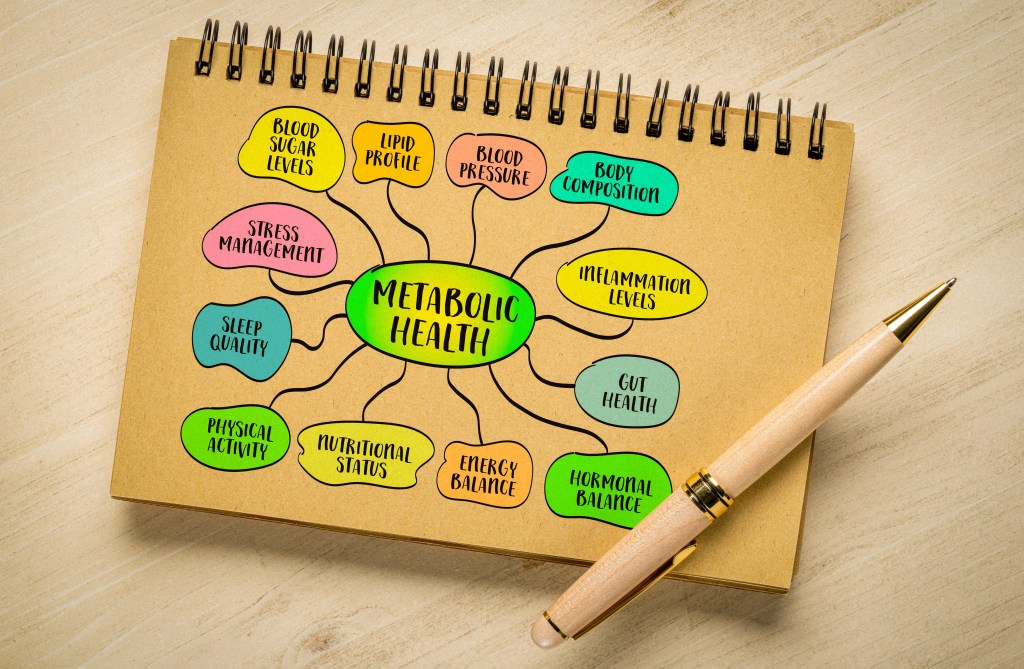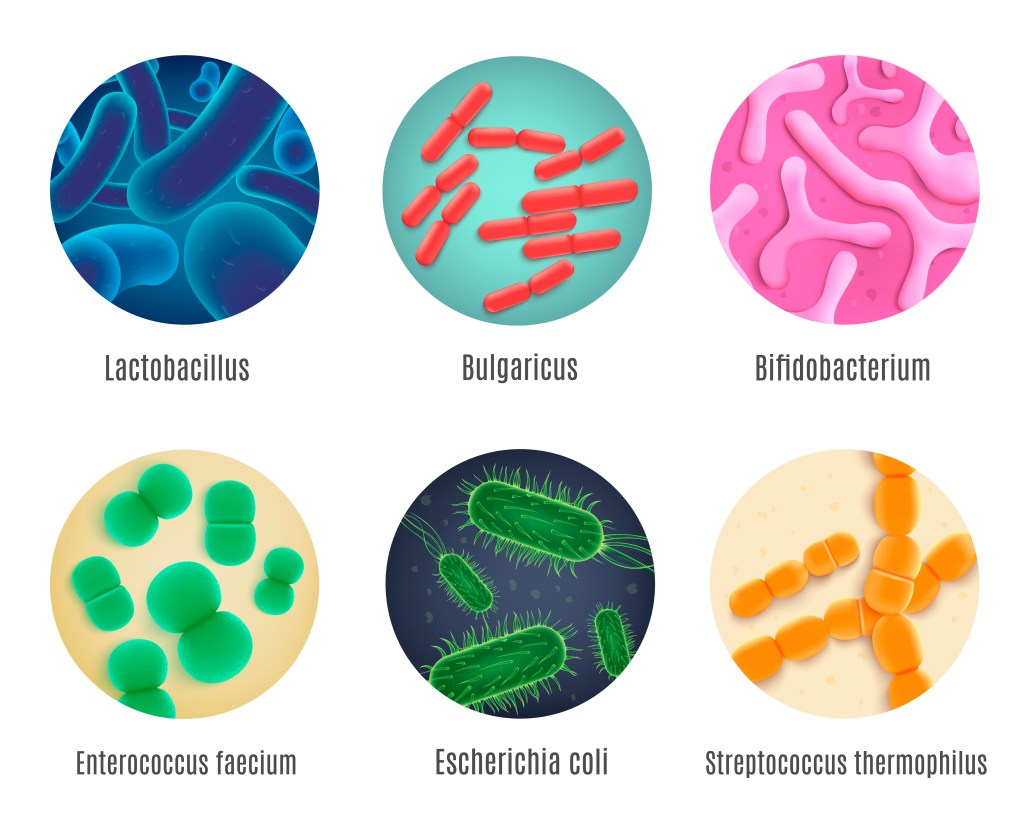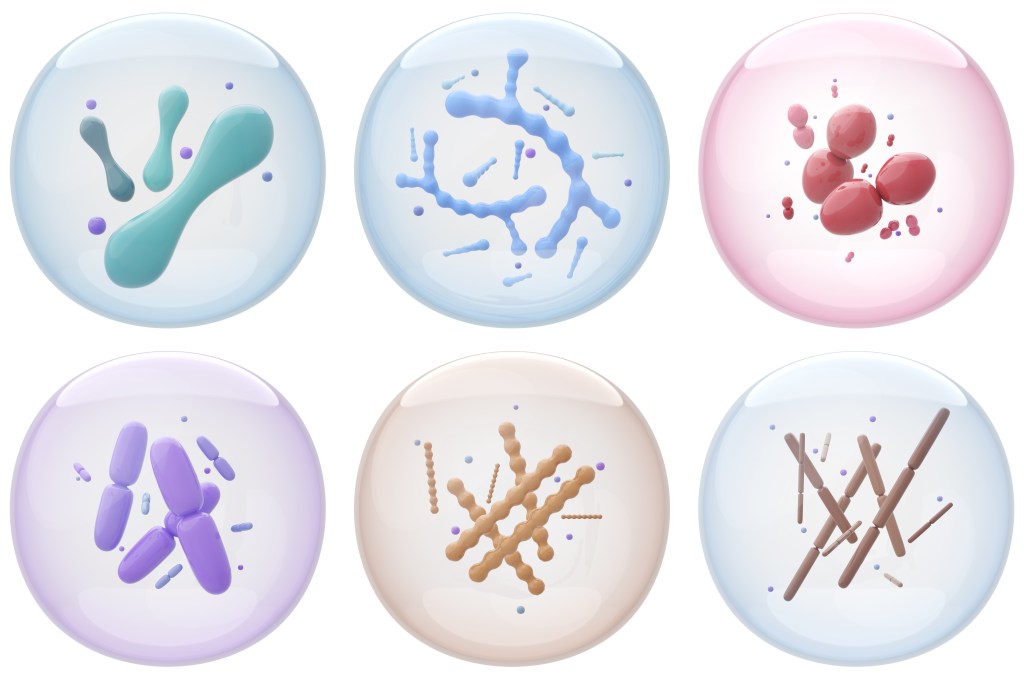At a glance
Probiotics may offer potential support for individuals with diabetes. Certain beneficial probiotic bacteria have been found to promote metabolic health, support balanced blood sugar levels, and lower the risk of diabetic complications. Knowing which bacterial strains are considered the best probiotics for diabetes can play a vital role in supporting healthy glucose metabolism and overall well-being.
It’s well known that probiotics promote gut health and strengthen the immune system. But did you know that certain probiotic bacteria help promote metabolic health and may benefit diabetes management?
Let’s look at the connection between beneficial gut bacteria and blood sugar control and discover the best probiotic for diabetes.
What are probiotics?
Probiotics are live microorganisms such as bacteria and yeasts that naturally reside in the human digestive system and contribute to the formation of the gut microbiome.
A healthy gut microbiome is crucial for immune system and digestive tract function and supports overall health and well-being.
Beneficial bacteria promote microbial diversity in the gut, which helps prevent the overgrowth of potentially harmful microbes linked to various health issues.
Factors such as frequent antibiotic use, regular alcohol consumption, chronic stress, and a diet high in sugar and processed foods can negatively impact microbial diversity, leaving many at risk of an imbalanced microflora.
A study published in the Canadian Family Physician reports that an imbalanced gut microbiome may be associated with an increased risk of gastrointestinal issues, weakened immune defenses, and cardiovascular conditions.1
Watch the video below to learn how beneficial dietary choices can help manage diabetes.
Benefits of probiotics for diabetes
Increasingly more research suggests that certain probiotic strains may have potential benefits for metabolic health and diabetes management.
A study published in Nature reports that a lack of microbial diversity has been associated with an increased risk of poor blood sugar balance and insulin resistance, the leading causes of type 2 diabetes.2
“Beneficial gut bacteria can impact the regulation of blood glucose levels and insulin secretion,” explains Dr. Berg. “Promoting a healthy gut microbiome with probiotic-rich foods may support blood sugar control and diabetes management.”
Check out these five benefits of probiotics for diabetes.
1. Improved insulin sensitivity
Insulin resistance is a metabolic disorder characterized by cellular unresponsiveness to insulin, a critical metabolic hormone needed to regulate blood sugar levels.
A diet high in sugars and carbohydrates can lead to frequent blood sugar spikes and the gradual loss of cellular sensitivity to insulin, which is linked to elevated blood sugar levels and the development of diabetes.
Evidence published in Diabetology and Metabolic Syndrome found that certain probiotic bacteria have shown the potential to enhance insulin sensitivity in muscle and liver cells. This promotes healthy insulin levels, lowers the risk of insulin resistance, and supports balanced blood sugar levels.3
2. Enhanced blood sugar control
Probiotic microbes ferment various types of prebiotic fiber in the colon, which releases short-chain fatty acids (SCFAs).
SCFAs promote insulin sensitivity and improve glucose tolerance, a measure of the body’s ability to control blood sugar levels after a carbohydrate-containing meal.
A study published in Advances in Nutrition investigated the health benefits of probiotics for diabetes and concluded, “Probiotics have a beneficial effect on fasting plasma glucose in adults with type 2 diabetes and benefit glycemic control in prediabetic individuals.” 4

3. Lower risk of type 1 diabetes
While type 2 diabetes typically is a result of dietary and lifestyle habits, type 1 diabetes is an autoimmune condition in which the immune system mistakenly attacks insulin-producing cells in the pancreas.
Beneficial gut bacteria interact with various immune cells and promote balanced immune responses associated with a lower risk of autoimmune diseases, including type 1 diabetes.
In addition, a diverse gut microbiota enhances the body’s ability to regulate blood sugar levels, which can benefit individuals with type 1 diabetes.
Research published in Microorganisms investigated the effects of probiotics in people with type 1 diabetes and noted that supporting a diverse gut microbiome with probiotic-rich sources may promote better glycemic control and metabolic health.5
4. Anti-inflammatory
Chronic inflammation plays a central role in metabolic diseases, including diabetes.
Inflammation contributes to insulin resistance and can trigger hormone imbalances linked to poor blood sugar control.
Consuming plenty of probiotic-rich foods can support balanced inflammatory responses by modulating the immune system and generating anti-inflammatory SCFAs, which are linked to better metabolic health and a lower risk of diabetes.
5. May benefit diabetes-related gastroparesis
Diabetes increases the risk of gastroparesis, a condition characterized by delayed emptying of the stomach, which can lead to digestive issues, including nausea, heartburn, and bloating.
Probiotics promote normal digestive function, and evidence published in Microorganisms found that Lactobacillus casei and Lactobacillus plantarum appear especially beneficial for managing gastroparesis.6

What are the best probiotics for diabetes?
The human microflora contains around 500 different types of probiotic species, and the number of life bacteria in the gut is greater than ten times that of all human cells in the body.
However, not all probiotics provide the same health benefits, and more research is being conducted to determine which bacterial strains may help manage diabetes most effectively.
Top probiotic strains for type 2 diabetes
Specific strains of Lactobacillus and Bifidobacterium have demonstrated the potential to help stabilize blood sugar levels, support insulin sensitivity, and promote metabolic health.
Here are the best probiotics for type 2 diabetes:
- Lactobacillus acidophilus
- Lactobacillus bulgaricus
- Lactobacillus casei
- Lactobacillus reuteri
- Bifidobacterium adolescentis
- Bifidobacterium lactis
- Bifidobacterium breve
- Bifidobacterium longum
Top probiotic strains for type 1 diabetes
While more research is needed to establish the link between probiotics and a lower risk of autoimmune diabetes, certain bacteria have been found to promote blood sugar control in individuals with type 1 diabetes.
These probiotic strains have shown potential benefits for type 1 diabetes:
- Bifidobacterium lactis
- Bifidobacterium breve
- Bifidobacterium longum
- Lactobacillus casei
- Lactobacillus plantarum
- Lactobacillus acidophilus

Sources of probiotics
Probiotics occur naturally in a variety of fermented foods, which provide some of the most potent and easily absorbed sources of beneficial bacteria.
Because fermentation encourages microbial diversity, regularly consuming fermented foods may help support a balanced gut microbiome, which is linked to better metabolic health.
Here are some of the best probiotic-rich food sources:
- Kimchi
- Sauerkraut
- Pickled vegetables
- Tempeh
- Miso
- Natto
- Kombucha
- Yogurt
- Kefir
- Aged cheeses
To maximize the benefits of probiotic foods, choose products labeled “live and active cultures” and avoid heating them after fermentation, as high temperatures can destroy beneficial microbes.

Probiotic strains in fermented foods
Sauerkraut and kimchi are excellent sources of Lactobacillus plantarum (L. plantarum), Lactobacillus acidophilus (L. acidophilus), and other lactic acid bacteria that develop naturally during vegetable fermentation.
Natto and miso, both made from fermented soybeans, can contain or promote the proliferation of beneficial microbes that support gut health. Depending on the fermentation method, these may include species such as L. plantarum and other lactic acid bacteria.
Other soy-based fermented foods, such as tempeh, may help increase the populations of beneficial Bifidobacterium adolescentis microbial strains.
Kombucha, a fermented tea, provides L. plantarum and various other beneficial microbes, such as Lactobacillus nagelii, Bacillus coagulans, and Komagataeibacter, depending on the fermentation culture used.
Dairy-based ferments, such as aged cheeses, kefir, and yogurt, typically contain L. acidophilus, Lactobacillus bulgaricus, Lactobacillus casei, and Bifidobacterium lactis, with some varieties also including Bifidobacterium breve and Bifidobacterium longum.
Interestingly, certain homemade fermented foods, such as yogurt made with Lactobacillus reuteri, often contain far more live bacteria than store-bought options, making them an especially potent option for supporting microbial diversity.

Risks and precautions
Probiotic foods are generally well tolerated and associated with minimal risks and side effects.
However, certain fermented foods can contain carbohydrates, and it’s crucial that individuals with diabetes opt for carbohydrate-free probiotic sources to avoid blood sugar spikes.
In some cases, fermented foods can cause gastrointestinal issues such as gas, bloating, or abdominal pain. These side effects are generally mild and transient and typically resolve as the gut microbiome adapts to increased intake of probiotic-rich foods.
However, if you experience prolonged or intense gastrointestinal discomfort after consuming probiotic-rich foods, it’s essential to consult a healthcare provider for a comprehensive assessment of your symptoms.
Key takeaways
- A diverse and balanced gut microbiome supports both metabolic and immune health, which are vital for effectively managing diabetes.
- Some of the best probiotics for diabetes include Lactobacillus acidophilus, L. casei, L. reuteri, Bifidobacterium lactis, and B. breve.
- Incorporating these probiotic strains may support healthy blood sugar levels, improve insulin sensitivity, and help reduce inflammation.
- Fermented foods, such as kimchi, sauerkraut, yogurt, kefir, and miso, are excellent natural sources of health-promoting beneficial bacteria and are generally suitable for individuals with diabetes.
FAQ
1. What is the best probiotic for diabetes?
When consumed regularly through probiotic-rich foods, probiotic strains, including Lactobacillus acidophilus, Lactobacillus bulgaricus, Lactobacillus casei, Lactobacillus reuteri, Bifidobacterium lactis, Bifidobacterium breve, and Bifidobacterium longum, are some of the best to support healthy metabolic function.
2. How do probiotics help with diabetes?
Probiotic-rich foods promote a healthy microbiome, which can benefit metabolic health and immune function and is linked to a lower risk of type 1 and type 2 diabetes.
Certain probiotic strains have been found to support insulin sensitivity, glucose metabolism, and balanced inflammatory responses, all of which are crucial factors for supporting metabolic health.
3. Which probiotic food is best for diabetes?
Fermented foods low in carbohydrates–including miso, sauerkraut, kimchi, and natto–are some of the best natural sources of beneficial bacteria for diabetes.
In addition, prebiotic foods such as asparagus, onion, garlic, and artichoke provide fuel and nutrients for beneficial gut microbes and may help maximize the health benefits of probiotic foods for diabetes.
4. Should diabetics eat probiotic foods?
Yes, people with diabetes may benefit from eating probiotic-rich foods. Certain probiotic strains of Bifidobacterium and Lactobacillus have shown the potential to support insulin sensitivity and glycemic control in diabetic individuals.
5. What probiotics lower A1C?
Probiotic strains, including Lactobacillus acidophilus, Lactobacillus casei, and Bifidobacterium lactis, have been linked to improved blood sugar control and lower A1C levels.
6. What probiotics are good for lowering blood sugar?
Probiotic-rich foods containing different strains of Lactobacillus and Bifidobacterium can help enhance cellular insulin sensitivity, which is vital to lower blood sugar levels.
7. Is it safe to eat probiotic foods if I have diabetes?
Yes, probiotics are generally considered safe for individuals with diabetes.
However, some probiotic foods can contain carbohydrates, and opting for carb-free probiotic options is crucial to maintain balanced blood sugar levels.
8. What are the side effects of probiotics?
While beneficial bacteria often have minimal side effects, some individuals may experience mild and transient gastrointestinal issues such as bloating, gas, and abdominal pain. These effects are typically temporary as the digestive tract adapts to changes in microbial diversity.
9. Can probiotics help manage type 1 diabetes?
Evidence suggests probiotic-rich foods may support blood sugar regulation in individuals with type 1 diabetes.
In addition, probiotic microbes interact with immune cells and promote balanced immune responses, which have been linked to a lower risk of autoimmune conditions, including type 1 diabetes.
10. Can probiotics help improve insulin sensitivity in people with diabetes?
Probiotics ferment prebiotic fibers into short-chain fatty acids (SCFAs), which have been found to promote insulin sensitivity in diabetic individuals.
Sources
- https://www.ncbi.nlm.nih.gov/pmc/articles/PMC1479485/ ?
- https://pubmed.ncbi.nlm.nih.gov/23719380/ ?
- https://www.ncbi.nlm.nih.gov/pmc/articles/PMC6714347/ ?
- https://www.ncbi.nlm.nih.gov/pmc/articles/PMC8166562/ ?
- https://pmc.ncbi.nlm.nih.gov/articles/PMC6463158/ ?
- https://www.ncbi.nlm.nih.gov/pmc/articles/PMC10221816/ ?








